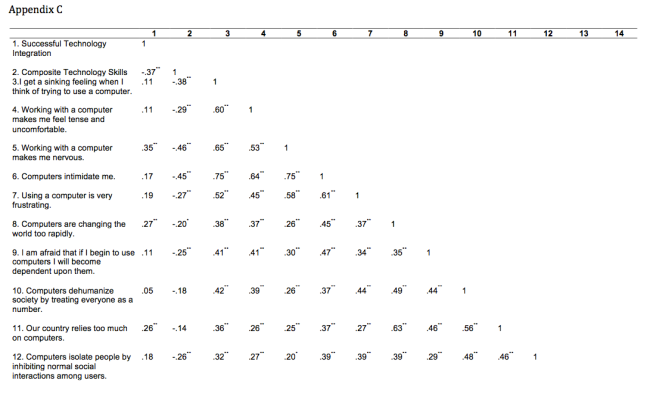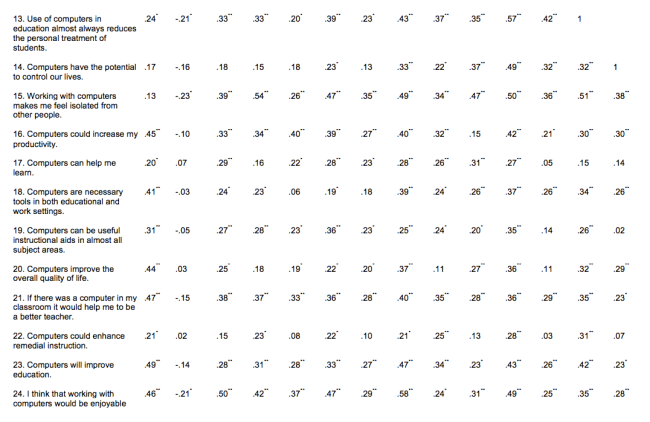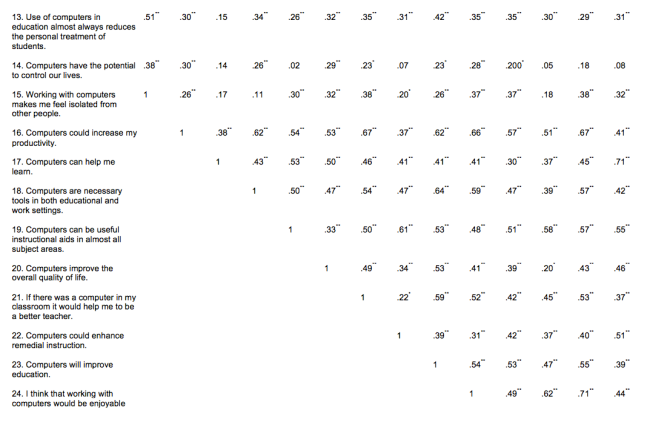At the recent 2012 ATMI/CMS Conference in San Diego, William Bauer (Case Western Reserve University) and I presented the results of a national survey (US) that explored the use of technology in music teacher education programs. This has been a fun project which I think clarifies and updates our understanding of this aspect of music teacher education. I’ll share a few highlights here, the presentation slides are available at http://atmi2012.webhop.org, and a full write up will be available in the future.
Half of the NASM (National Association of Schools of Music) schools with music education programs (n=250) were randomly selected. A faculty member from each of these programs were invited to complete an online survey. We received 89 responses (36%) after four rounds of email invitations were sent. The survey addressed four research questions: 1.What curricular configurations are being used to address technology?; 2.What is technology’s role in music education curriculums?; 3.To what extent are students prepared to integrate technology in their teaching?; and 4.What are the constraints upon teaching pre-service teachers about technology ?
Here are the highlights of what we found:
1.What curricular configurations are being used to address technology?
We found that 70% had one or more stand alone technology classes (47% music tech, 37% music ed tech, 13% ed tech) and that 77% of programs integrated technology elsewhere in the curriculum. This represents an increase from the 2002 Price and Pan study the found that 30% of music programs (in the southeastern US) required music ed tech classes. However, Kliener et. al. found that teacher education programs (not specific to music) had both more programs with dedicated tech courses (85%) and integration (93%)
2.What is technology’s role in music education curriculums?
Using Mishra and Kohler’s TPACK model, we found that areas involving pedagogy and content were more thoroughly addressed than areas involving technology. The general content knowledge score was lower than might be expected, as composition and improvisation were not viewed as being thoroughly addressed. Also, technology knowledge scored higher than areas involving both technology and content and/or pedagogy.
3.To what extent are students prepared to integrate technology in their teaching?
The respondents were asked to indicate on 1-5 scale the level of preparedness of their students to integrate technology. The mean score for integrated current technology was 3.24, indicating a intermediate level of preparation. The score dropped a bit for future technology (2.99) and even more for teaching a technology-based music course (2.67). The last score does raise the question of who will replace the late career teachers, who have created the majority of technology-based music classes and are now nearing retirement?
4.What are the constraints upon teaching pre-service teachers about technology?
The constraints were not surprising. Two rose to the top: 1.) limitations of time and credits in the curriculum and 2.) funding. Other constraints, mentioned to a lesser extent, included lack of faculty expertise, difficulty in keeping up with technology, and the lack of consistent tech resources/usage in field placements.
General conclusions.
The data in our study shows that while technology has been become more prevalent in the music teacher education curriculum, but not to the extent that it is in teacher education in general. The divergent range of comments, coupled with the data shared above, seems to indicate that the music teacher education could benefit from sustained focused discussion and learning opportunities to maximize effective utilization of technology in our pedagogy.
Special thanks go to Rowan University undergraduate research assistants Matt Ercolani and Marissa Truglio for their help in developing the email contact list used in this study!
References
Dammers, R., and Bauer, W. (2012). Music technology in music teacher education: A national survey. Presentation at ATMI/CMS 2012, San Diego, CA.
Kleiner, B., Thomas, N., & Lewis, L. (2007). Educational technology in teacher education program for licensure (NCES 2008-040). National Center for Educational Statistics, Institute of Education Sciences, U.S. Department of Education: Washington, D.C.
Price, H. and Pan, K. (2002). A survey of music education technology at colleges in the southeastern USA. Journal of Technology in Music Learning, (1). 55-66.





